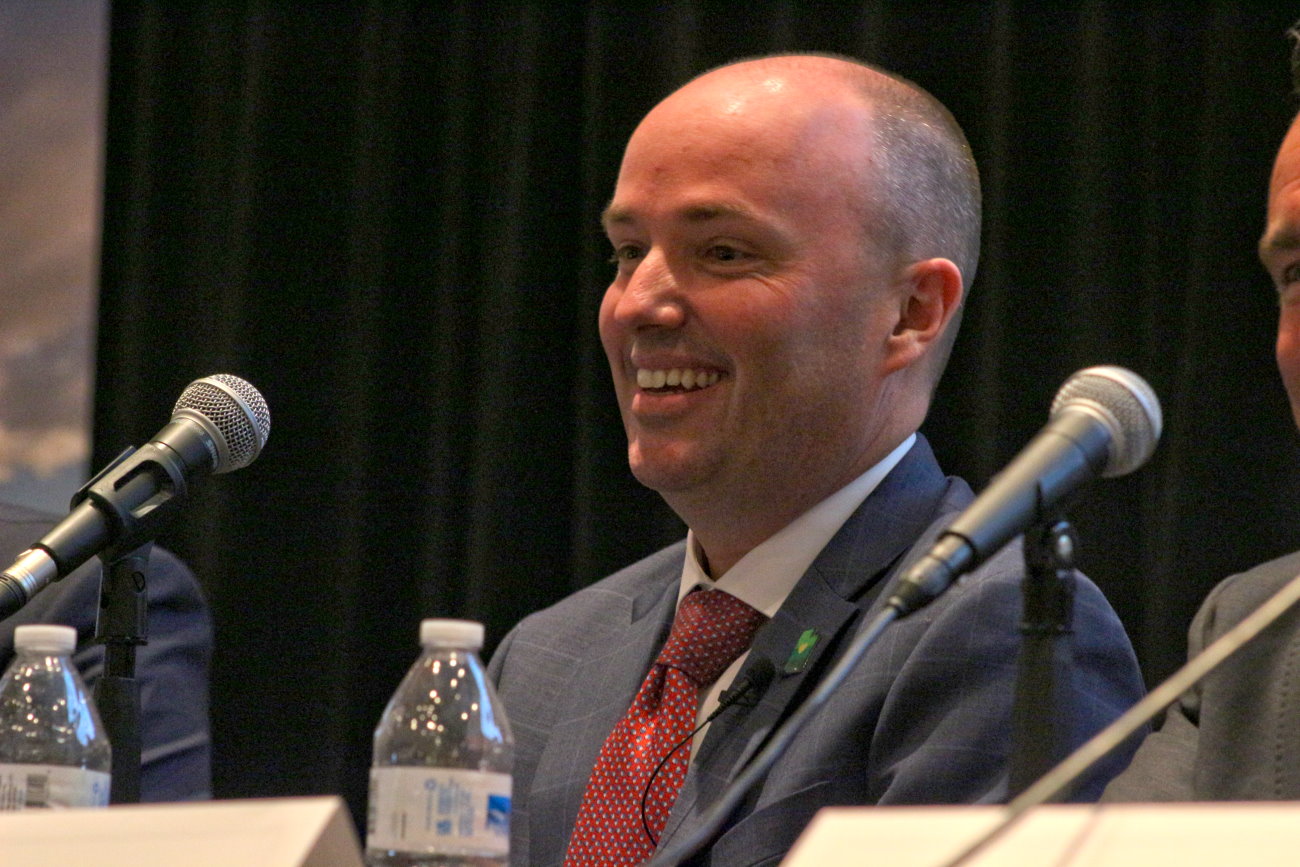
ST. GEORGE — Last week, a series of reports from Governor-elect Spencer Cox’s transition team outlining recommendations and potential policy for state agencies was made public. Among them was a review of the Utah Department of Transportation and recommendations made for transportation infrastructure moving forward.

The various reports were released online Tuesday and consist of over 20 separate state agencies from transportation to taxes and economic development to public safety. Within the 10-page review for transportation, the three-person team listed as conducting the review made recommendations for finding alternatives to the state’s current gas tax, providing greater transparency to the public, focusing on transportation planning off the Wasatch Front and so on.
“The Utah Department of Transportation (UDOT) is one of the most important and high-profile departments within Utah state government,” the review states, “UDOT improves the lives of every Utahn daily by ensuring both safe and timely travel for all vehicles on our state roads as well as the efficient flow of commerce to indirectly benefit consumers.”
Finding a more stable means of road funding for transportation infrastructure projects and maintenance was among the first items listed in the review. Due to the dwindling amount of revenue the state’s gas tax brings in due to more gas-efficient and electric vehicles on the road, the gas tax may need to be replaced with another source of funding.
The review recommends the switchover to a road user charge, or a fee based on mileage, concept. The implementation of toll roads was also listed.
Increasing regional transportation planning outside of the Wasatch Front was also outlined.

“The funding prioritization process is skewed to fund projects in the most heavily populated areas. That needs to be evaluated and changed,” the report states. “It is critical to have UDOT work alongside local governments and transportation partners to effectively plan and prioritize regionally.”
Having a safe and extensive road system in the rural parts of the state is also seen as a way to help spur economic development in these areas, while also providing greater ease of access to outdoor recreation opportunities.
Going along with a call from Cox’s incoming administration to increase teleworking opportunities across the state, the report suggests continuing to use UDOT right of ways as the backbone for expanded fiber and broadband infrastructure efforts statewide.
Investment in statewide use of electric vehicles is also recommended, as is preparing for the implementation of “drone delivery corridors” and integration of autonomous vehicle use into Utah’s transportation system.

The report notes that UDOT employees, while apparently enjoying their work, have lower-paying jobs compared to what they could be making in the private sector. The report recommends increasing the pay for certain employees in order to retain them.
“Consider increase in pay to snowplow drivers/transportation techs and incident management workers,” the report states. “They are front-line workers providing necessary services to Utahns.”
Recommendations are also made to increase public transparency when it comes to letting the public know the final costs of road projects. Finding new ways to simplify public reporting and dissemination of finance information is also listed, as is a recommendation to “invest in additional survey research and public relations efforts to understand public sentiment and inform public of successes and available resources.”
Transportation priorities for different parts for the state are also outlined in the report.
In Utah’s southwest region – Washington, Iron, Kane and Garfield counties – an emphasis is placed on providing better ways to access Zion National Park while also spreading visitation to the overall region and not the national park only.
The report states:
Springdale is a choke point for visitors wanting to experience Zion National Park. It is the nation’s second busiest park, in part due to its ease and proximity to a major interstate and a day’s drive from major western U.S. cities.
The solution will be a combination of a new East Zion Visitor Center, Zion trails originating in Kane County, and a regional shuttle system that can eventually connect St. George, Hurricane, Springdale, Kanab, Panguitch, Bryce Canyon, Cedar Breaks National Monument and Cedar City. Utah can’t put any more people through Springdale in autos. But we can handle the visitor demand through dispersing visitors and utilizing a sophisticated shuttle system: one that moves visitors regionally to stay longer and experience similar beauty throughout SW Utah. Integrating hiking and biking networks with the shuttle system will enhance what visitors are looking for.
Any moves to change statewide policy, such as implementing a road-use charge to replace the current gas tax, must be approved by the Legislature first.
Copyright St. George News, SaintGeorgeUtah.com LLC, 2020, all rights reserved.